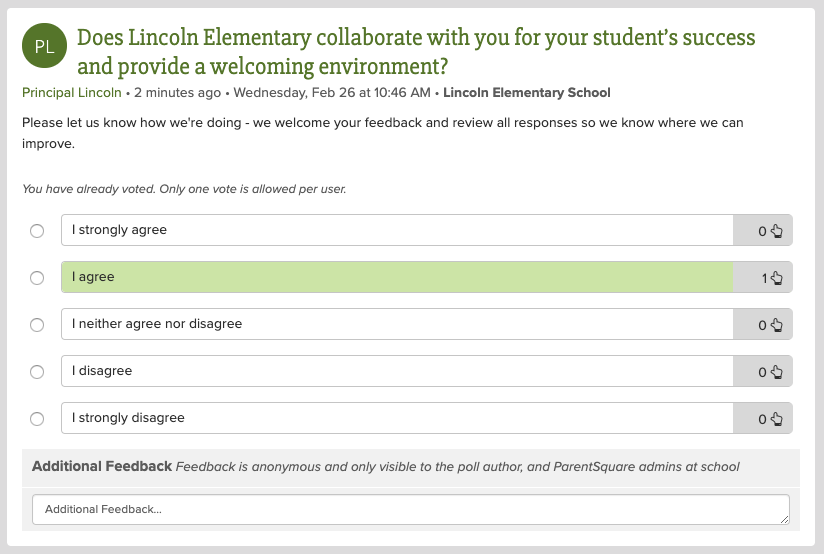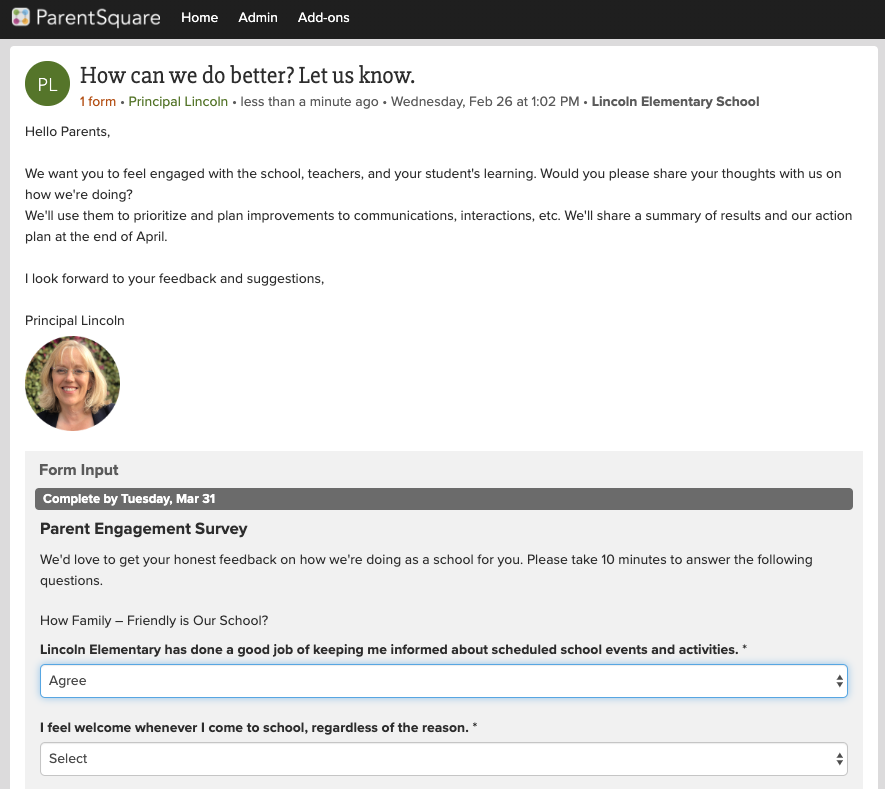
Written by Paula Cassin
Here are 5 questions you should be able to answer, in order to measure how well your current parent engagement strategies are working — and how to improve them.
- Are Parents Contactable?
- How are Parents Connected?
- Are Parents Listening?
- Are Parents Interacting?
- Are Parents Satisfied?
We covered the first three in Part 1 here — below is Part 2, covering interaction and satisfaction!
“The best predictor of student success is the extent to which families encourage learning at home and involve themselves in their child’s education.”
— How Parent Involvement Leads to Student Success, Waterford.org
4. Are Parents Interacting?
Once you have a sense of who’s seeing and listening to communications coming from your school or district, the next level of engagement is interaction! What are your parents actually doing in response to your engagement efforts?
First let’s take a step back. There are so many ways parents interact to support their students and their schools, and all of it contributes to their overall engagement. Here are just some of the actions parents might take during a typical month:
- Completing forms, permission slips, waivers
- Attending school meetings on college readiness, emerging topics, student activities
- Fundraising or volunteering for their student’s sports teams, performing arts, robotics club
- Sending in surveys, polls on school climate
- Attending sports games, concerts, plays
- Communicating with teachers in person or online
- Volunteering to organize events, chaperone
- Donating supplies, food and money
- Asking staff or counselors questions in person or online
- Sharing student successes with friends and family
- Liking and sharing posts on social media
With so much going on, how in the world would you collect and track all interactions? To begin, you’ll want to pick a few proxy metrics, focused on the kinds of interactions you’re most concerned about. Make sure your metrics represent all kinds of families, not just the highly involved superstars, and cover a range of communication types (for example, face-to-face, online, one-to-one and group messaging, English and other language communications).
Suggested Actions
- Decide which interactions are most important.
Determine “healthy” interaction levels for each metric.
- Perhaps a 50%+ RSVP rate for Back to School Night and 70% RSVP rate for an ELL new family orientation are your targets.
- Overall interactions with 40-50% of your parents could be another worthwhile target.
- Work with your schools to set up a process to capture interaction metrics and then review regularly.
How This Works in ParentSquare
The ParentSquare platform can help districts and schools track interactions across all their digital communications, including one-to-one messaging, group messaging and “action requested” communications — covering RSVPs, forms, permission slips, sign-ups, etc.


Dashboards make it simple for schools and districts to track changes over time. You can understand what interaction levels you’re starting with and then measure progress.
5. What Do Parents Think?
Now we’re getting to the emotional and personal part of the engagement metrics spectrum. Similar to interactions, you’ll want to come up with proxy measurements for parent engagement that you can capture regularly and track over time. Three ways to collect parent feedback include:
- Annual Surveys
- Periodic Polls
- Individual Feedback
Annual surveys and polls invite your parent community into your process, making them feel like valued stakeholders whose opinion matters. You can use results to gauge the success of your parent engagement plan and to make improvements to better serve families in the district.
While annual surveys provide rich data, they are not enough if you want to continuously improve parent engagement. Spot polls and individual parent feedback can help you track and take action throughout the year. Ongoing data helps you spot any situations affecting parents’ satisfaction early so you can act before it impacts more parents. Monitoring and making many small changes throughout the year gives you more opportunities to adjust and improve.
A working paper from the Equitable Parent-School Collaboration Research Project on Developing Common Parent Engagement Indicators suggests three core measurements:
- % of parents who feel knowledgeable and confident in their ability to support their child’s learning pre-k through college.
- % of parents who believe their school provides a welcoming and culturally responsive learning environment.
- % of parents who have leadership opportunities and influence on decision-making at their school or district.
Don’t forget to look at what already exists: some of the questions from your state school climate survey might serve as reasonable measures of parent engagement.
Suggested Actions
- Identify what you want to measure.
- Determine what you can measure, and what you already have.
- Capture metrics and then identify priority improvement areas.
- Take action to address priorities.
- Measure more than once a year.
How This Works in ParentSquare

ParentSquare can help you deliver polls, school-wide surveys and also help you collect ongoing qualitative feedback. It’s easy to create polls for parents throughout the year, accessible through the web portal or mobile app:
ParentSquare also supports surveys — invite parents, set a close date, and track what kind of response rate you’re getting. You can also send a reminder to those who haven’t replied, to maximize submissions and avoid bothering those who did respond.
Templates can be shared across the district and individual schools, saving time and increasing consistency.

How to Get Started
As you review possible actions and ideas from Part 1 and this post, here are some tips to help you create a path to success.
- Start Small
Have a look at what already exists and what you can easily track over time. If you can set up tracking and improvement cycles for one of the five metrics, this can provide evidence of impact that can be used for more comprehensive efforts.
- Measure Continuously
We’re big believers in real-time dashboards so you can spot changes early and act sooner.
- Small Improvements
Large scale change, involving many stakeholders and system overhauls take months if not years and have a high risk of failure. Instead, run-low risk, small-scale improvement experiments — e.g. try a change with one counselor, one staff member, one newsletter, one email to parents. Ten small, low-resource changes throughout the year can add up to a major shift on the annual parent engagement survey.
- Involve Stakeholders
Connect with school and district staff who would benefit from your measurements. Let them know about your project and keep them informed along the way. (If you keep your initiatives small, this will go well.)
- Share the Data
If you are truly committed to doing something with the data you track, then share it out with families and the community! Be transparent with parents, teachers, staff. Let everyone know you care about parent engagement and are working to improve it. You’ll spark additional feedback and might even get great ideas or people wanting to help.
(When you sign up for a live platform walk-through, let us know if you’d like to hear more about dashboards and reporting!)







